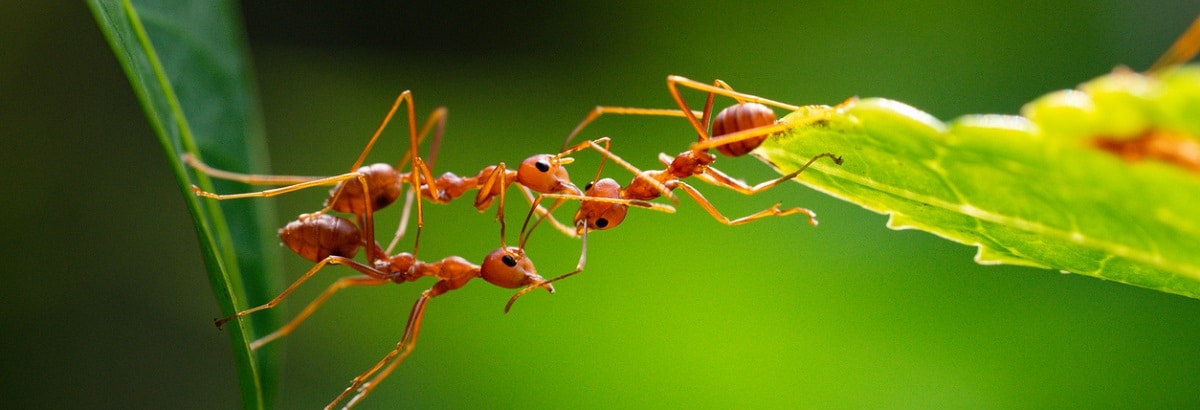Gonzalo Sanz Segovia | 30/10/2025
Every form, nexus, and movement in nature serves a purpose. In its apparent chaos, it hides the secret of its survival. Biomimetics, a science that draws inspiration from flora and fauna, allows us to find efficient responses in civil engineering, addressing the challenges of resilience and sustainability of critical infrastructures.
All living organisms that inhabit the wild natural landscape have been perfecting their place in the world for millions of years, modifying their structure or context to adapt to the passage of time. Its permanence is a lesson in resilience. César Martín-Gómez, Doctor of Architecture and expert in biomimetics, explains: “This science, applied to civil engineering, seeks to transform construction methods and improve the energy efficiency of buildings, drawing inspiration precisely from natural principles.”
Resilience and sustainability
Biomimetics has driven architectural techniques and technologies that promote the optimization of natural resources and even reduce the carbon footprint. As indicated in the article Bio-logic, a review on the biomimetic application in architectural and structural design, published in 2022, its influence has reached disciplines such as engineering, the choice of materials, or the digital design of firmer infrastructures.
One of the achievements of this field is the understanding of the biological principles that directly influence energy efficiency. “Engineering has adopted animal thermoregulation for HVAC systems (heating, ventilation, and air conditioning).” “For example, simulations have shown how thermal regulation of tuna can reduce the energy demand in office buildings by up to 30%,” explains the expert who participated in the research on this energy behavior. “This fish generates heat in his body -in the internal muscles- and distributes it outward.” The study revealed that this same logic can be used to reduce heating in offices if the areas that generate the most heat – for example, the rooms with a lot of personnel or machinery – are placed in the center of the building. Furthermore, biomimetics has also led to the development of innovative materials, such as self-cleaning surfaces inspired by the lotus effect, or reversible adhesives emulating the capacities of the gecko.
Paradigmatic cases of applied biomimetics
Engineering benefits from the adoption of natural strategies that make infrastructures more resilient. Various examples on a global scale show how biomimetics bears fruit in large projects. “At the Eastgate Centre in Zimbabwe, a ventilation system inspired by termites was implemented, achieving 90% savings in air conditioning costs,” notes Martín-Gómez. This building uses a natural solution to regulate the indoor temperature without the need for a conventional heating and air conditioning system, demonstrating the potential of biomimetics to create more sustainable spaces.
Currently, integrated thermoelectric systems in façades are also being explored as alternatives to common heat pumps, such as those developed by Martín-Gómez himself and successfully tested in Antarctica in 2018. The vertical cooling panels are inspired by elephant ears. As the researcher states, these can dissipate between 107 and 230 W/m², making them an innovative alternative for high-density buildings. This type of solution, in addition to being efficient, offers a more sustainable and economical approach to design.
Protection against natural threats
Biomimetics offers innovative solutions for protection against natural hazards, integrating principles of nature itself in the design of materials and systems. Martín-Gómez points out as an example the “self-qualification materials that automatically restore minor damages, the early warning systems inspired by animal communication networks, or the adaptive structures that modify their behavior in response to extreme events.” An active research area in this field is the development of integrated thermoelectric systems, which allow buildings to maintain livable conditions during power outages, which is crucial for critical infrastructures during natural disasters.
Thanks to biomimetics, early detection technologies and emergency response have also been developed. Plant roots, for example, communicate mechanical stresses through chemical signals, inspiring distributed sensor networks for continuous structural monitoring. And ants’ colonies optimize their evacuation routes through pheromones, a behavior that applies to emergency signage systems. “Although the direct applications are limited, the research explores bio-inspired sensors that detect microscopic structural changes and distributed communication systems for quick response coordination,” assures the professor.
Challenges and opportunities of future
Despite the multiple possibilities that biomimetics offers for the construction of smarter and more resilient cities, there are several limitations and technical challenges that still need to be overcome. “Current manufacturing techniques are not capable of accurately replicating microscopic biological structures, and the complexity gap between multifunctional natural systems and engineering applications remains significant,” says the expert.
However, the opportunities for integrating biomimetics in smart cities are enormous. It is expected that these cities will integrate thermal self-regulation systems, water management inspired by forest ecosystems, and distributed communication networks based on natural nervous systems. Moreover, the convergence of technologies such as the Internet of Things, AI, and biological principles will enable a significant advance in the creation of adaptive and sustainable infrastructures. “4D printing, for example, will pave the way for the construction of infrastructures that evolve over time, automatically adapting to new needs and challenges,” concludes Martín-Gómez.
Article collaborators

César Martín-Gómez has a PhD in Architecture from the University of Navarra. Throughout his career, he has collaborated on various projects related to facilities and energy systems at I&S Engineers, in the Architecture Department of the National Center for Renewable Energy, and at Mangado & Asociados.
He currently combines his research work with teaching as a professor in the Department of Construction, Facilities and Structures at the University of Navarra.





